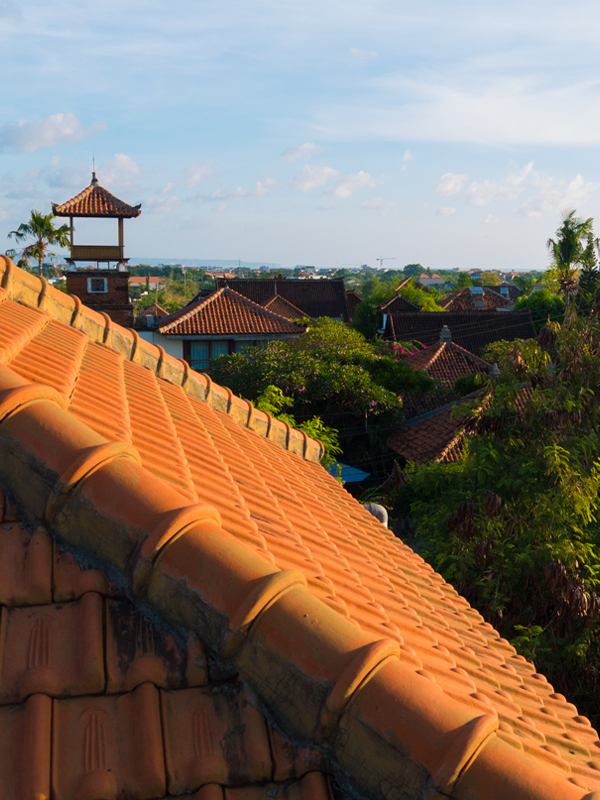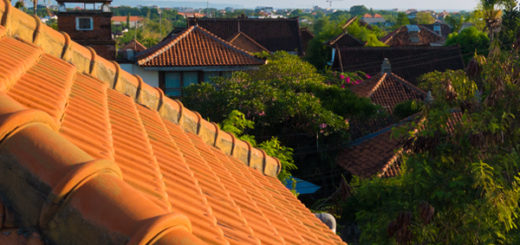What it Costs: Digital Nomad Life in Bali
What’s it really like to live as a digital Nomad? We’re talking budgets, what kind of food I ate, what I did for fun, what the immigration processes there were like, everything. Bali is the current place to be, and it’s the place I get the most questions about, so without further ado, this is what living and working in Bali looks like on the ground.

The Budget Breakdown:
All amounts in USD and on a monthly time frame.
- Rent $700/mo
- Food $150/mo
- Travel (within Bali) $20/mo
- Entertainment $40/mo
- Visa related expenses $200/mo ($400 expense over two months)
- Toiletries and miscellaneous items $5-10/mo
Total: $1,120/month
Alright, so Bali is the conventionally cheapest place I’ve lived, but it definitely isn’t the place that I’ve spent the least money living for a bunch of reasons you wouldn’t expect. Here’s how each category actually worked out:
Rent.
We rented an Airbnb from a ridiculously awesome couple in Kerobokan. It wasn’t in a major tourist area, and didn’t have much in the way of entertainment around it, but we figured the cheap transport in Bali would make up for it. The couple we stayed with were an American man and an Indonesian woman, and they helped guide us through Bali living. We even got to go to their wedding before leaving Bali (coolest experience ever, by the way). If you can stay with a local, do it. You’ll end up having experiences you wouldn’t otherwise.
We stayed in a 2nd floor bedroom of a fairly run-down villa. There was a pool in the courtyard that I used frequently, and the 2nd floor had a large, wrap-around porch that I did most of my work on. The bedrooms were all air conditioned. There were two major drawbacks with our choice of rental, however, and neither were avoidable.
- The outlets weren’t properly grounded, and so electronics that were plugged in to the wall would shock you if you touched any metal on them. This made my husband’s desktop computer enemy #1 for the duration of our stay.
- The neighbors would burn their trash, including plastics. This is normal in Bali, but it really irritated my nose and throat. Some days the smoke would be carried up to the porch where I worked, and I had a fairly serious throat inflammation once as a result of breathing it in. Air conditioners do filter some of the smoke, but not all of it. It was pretty normal for us to wake up with scratchy throats as a result.
If we were to do it all again, I’d opt for a different bedroom in the villa. The bedroom by the pool didn’t have the smoke issues that ours did. If you know you’re sensitive to smoke, try and stay in a bedroom that faces the courtyard of the villa as you’ll be less likely to have issues that way.
Food.
Oh food. I love you when you’re delicious, but when you aren’t, it ruins my day. I’m just going to come out and say it: there IS good food in Bali, but there wasn’t good, affordable food near us.
My husband has digestive issues, and he can’t handle spice. We already knew Bali would be tricky since spice is how the locals preserve things, but we had no idea just how bad the food situation would really be. Bali belly aside, the quality of most of the cheap meals was extremely questionable. My husband had maybe 3 things he could eat when it came to local food (which again, we were anticipating), and I can’t tell you how many times our food either left us wanting or sick. I personally didn’t have a ton of problems with the food since I like things spicy, but even I have to admit that most restaurants serve the same 12 dishes on every menu. It can get really old, really fast.
I personally did like a lot of the food. I’d already had a ton of Indonesian food when I was living in Singapore, and there is nothing like a good Redang. The problem was watching my poor husband struggle to find something to eat. The poor man even got food poisoning right before our flight to leave Bali. With food prices in nearby Singapore about the same, it really wasn’t worth it to me.
We had been planning on cooking a lot while in Bali because of my husband’s digestive issues, but I definitely wasn’t prepared for how much of a pain in the butt cooking would be. The local market near us was great. This is where the locals shop. The vendors knew who I was and always gave me quality ingredients. They were friendly to chat with, and I enjoyed my trips there. The “local” supermarket on the other hand… let’s just say it was more of a hassle than it was worth. The supermarkets are ridiculously difficult to get to in most cases. They rarely have enough parking to handle the motorbikes everyone uses to get around, and every time I went the lines were extremely long. They made shopping a real chore where I had to carve out 2 hours of my day to get what I wanted, which leads me to my next point…
Travel.
The traffic in Bali is BAD. We made the trip to and from the airport 4 times when we lived there. The longest time it took was 3.5 hours. The shortest was 30 minutes. The only difference was the time of day. If you’re driving around after 1am, you’ll find it extremely easy to get anywhere quickly. After 7am, though, expect it to take at least twice as long to get anywhere you’re going. Bali has had a huge boom in tourism and development in the past decade, but the infrastructure hasn’t kept up. It’s just a reality of living in the more densely populated areas in Bali. The more rural the area, the less traffic.
The main way to get around in Bali is by motorbike. Everyone has one. We decided against renting one for ourselves. Instead, we relied on Grab and Go-jek’s ride sharing services. Grab is the better between the two in my opinion. It will translate between your language and the driver’s language, so you don’t have to worry about whether you’re being understood.
The taxi drivers of Bali do have a huge vendetta against ride sharing. They will intimidate rideshare drivers, and they post signs saying ridesharing is prohibited in certain areas even when it isn’t. Fortunately, this was really easy to get around. If you need to be picked up from a popular area, just walk a block or two away from the regular pickup areas and schedule a pickup in front of a random shop. Most rideshare drivers will instruct you to do this when you try and book a ride with them.
Similarly, you can get a ride from the airport if you schedule a pickup from the departures area. There are a ton of rideshare drivers that are dropping off passengers for their flight, and they love being able to grab a new passenger instantly. If you’re leaving the airport from arrivals, look for a staircase just to the right of the arrivals pick up area. Departures is on top of arrivals, and that staircase is the easiest way to get between them.
As a final note, you can rent cars in Bali. My father’s best friend died on a motorcycle when I was young, and so we travel by car any time that we have the choice out of respect to him. Motorbikes are faster when getting from A to B, but accidents are extremely common. I saw someone on a motorbike break a foot while I was waiting for a pickup. Be aware of the dangers.
Entertainment.
So this is the category where Bali really shines. There are TONS of things to do. Obviously there is the beach and visiting local temples, but there are plenty of other things beyond that. We lived a block away from a skate park, for example. Our Airbnb hosts would often invite us to their favorite pool hall to play with them, and that became one of our favorite ways to spend a night out. There’s nothing quite like learning pool from a local only to find out that they used to be a championship player before they retired.
Bali is full of hidden gems. If something looks interesting, stop and check it out. I’ve never met a friendlier culture than the Balinese. The vast majority of people are happy to include you in whatever they’re doing regardless of whether you can speak their language.
My husband and I don’t drink, so I can’t comment on alcohol prices, but most nights out for us only cost a few dollars on top of food. The best advice I can give you is this: when someone invites you out to do something, say yes.
Visa Costs.
So the reason Bali became the digital nomad capital of the world is because of Indonesia’s flexible visa process. Most countries can get a 60 day stay without a visa, and you can purchase an extension to that before you go through immigration at the airport.
We did one visa run while we were in Bali. We did a day trip to Kuala Lumpur so we could check that box saying we left the country and get a new stay. That trip was a nightmare, but Indonesian immigration wasn’t the issue. AirAsia completely fucked us over and made us spend twice what we’d booked originally, but that’s a story for another day. The $400 price tag I’ve included for visas doesn’t include AirAsia’s fuck up; it’s the price our trip would have been otherwise as well as the cost of the visa extension for two people.
There are a ton of other articles that talk about the visa process for Indonesia, so I’m not going to dive into that here. The best article I’ve found on renewing a visa in Bali is here.
When you’re doing a visa run, expect to pay at least $200 for a round trip flight and meals. Singapore and Kuala Lumpur are the cheapest places to fly to, but I’d recommend Kuala Lumpur between the two as Singapore can be strict about visa runs and it’s easier to miss your flight back as a result.
Toiletries and Other Miscellaneous Items.
So this category is the only one that’s basically the same as most other countries. Shopping here is about what you’d expect: most items are cheaper except for some hard-to-ship imports. Fun fact about Indonesia: there is little infrastructure between the islands, and so it’s cheaper for most places to import foreign goods than ship goods between the islands. That means items like peanuts are surprisingly expensive.
We didn’t go clothing shopping while in Bali (when you live out of a suitcase, you need a good reason to buy a new outfit), but the prices I saw were slightly cheaper than in the US. Most items were between $10-20, but you can find things for less if you go digging. It’s also incredibly easy to find amazing local tailors, so if you want something custom, check that out.
Internet and Workplaces.
If you’re going to be working on a laptop, you’ll probably want to know what the internet is like. Bali is hit or miss when it comes to good, consistent internet, but the hits are more common. It’s fairly normal to have internet speeds drop when it’s windy (the internet cables are usually strung through the power lines around the island), but most cafes have internet that’s fast enough to do basic work or voice calls. Our villa had a power outage twice in the time we stayed there, but both times I was able to walk to a cafe and continue working there.
Don’t go in expecting speeds over 10mbps. There are coworking spaces that can get you internet faster than that, but they are more rare than the sheer number of digital nomads living in Bali would lead you to believe.
Overall Impressions:
Bali isn’t a place we want to go back to, but most people I know love it. I’d definitely go back for a vacation, but working and living in Bali wasn’t fun for me. There are better options for the price if you know what you’re doing, and with Singapore so close, we personally would rather be there. Full disclosure, though, we’re absolutely biased because food is extremely important to us and we have more friends in Singapore because I’ve lived there twice now. Surprisingly, the difficulties of getting around Bali were the thing that turned us off the most.
If you’re looking for a tropical adventure, Bali is probably the right place for you. If you pay more than we did on rent and food, you can live in luxury for much less than anywhere else ($1,000/mo for rent gets you a lot in Bali). We’ll be in Bali back once the infrastructure catches up to the demand for sure.
















